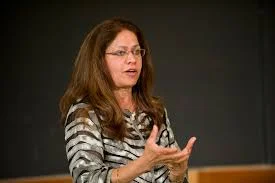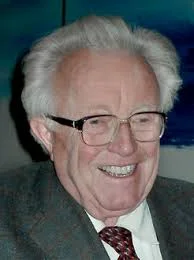The International Narcotics Research Conference (INRC) is one of the most significant meetings for researchers and clinicians working in the field of opioid pharmacology, physiology, biochemistry, medicinal chemistry, and clinical studies. The first official meeting of the INRC was held in July 1969 in Basel, Switzerland as a satellite of the IUPHAR meeting. Since then, the INRC has been held annually for the last 47 years, and its membership has expanded significantly. The INRC is known to attract internationally-renowned scientists who regularly present ground breaking research. This conference has always been a small but impactful meeting where scientists from different specialties come together to identify novel mechanisms and therapeutic strategies for the treatment of addiction, chronic pain, and mood disorders. In addition, a fundamental philosophy of the INRC community is to engage trainees, and highlight their contribution as young scientists. Within the meeting agenda, the organizing committee makes a concerted effort to include talks from post-doctoral fellows and graduate students, and provides ample opportunity for engaging discussions between senior scientists and trainees.
Early history of the INRC
In July 1969 the triennial meeting of IUPHAR was held in Basel. Right after the formal termination of the proceedings of that meeting a satellite session on narcotics was held in a classroom of the campus of the University on July 19, 1969, which is almost precisely 25 years ago. The facilities left something to be desired, but the session itself was lively and interesting. This meeting was planned and organized by Hans Kosterlitz and the late Harry Collier. The program had no papers on peptides, none on receptors and no mention of the term opioids which had not yet been coined by the late Bill Martin.
At the close of the proceedings which occupied all of one very hot and humid day morning the participants proceeded to have lunch as guests of the organizers at the Hotel Euler which according to the Guide Michelin had the best table in Basel. The entire budget for this meal was about 50 francs. I don't think that this sum will cover a lunch for two at the restaurant today. At the end of the meal there was a mild crisis when there was an unexpected distribution of excellent Havana cigars. Dr Kosterlitz realized immediately that unless unchecked this would be a budget-buster and he scurried around retrieving the distributed cigars before any of us could light up.
This meeting in Basel was actually a tryout for the big event which took place in 1971 at the University of Aberdeen. A symposium on narcotics and narcotic antagonists was held as part of the program of the annual meeting of the British Pharmacological Society. A volume entitled "Agonist and Antagonist Actions of Narcotic Analgesics" edited by Kosterlitz, Collier arid Villareal was published to commemorate the occasion.
In 1972 the IUPHAR met in San Francisco. Avram Goldstein organized a satellite session on narcotics which was held after the end of the formal meeting. Although this meeting was not as grand an occasion as the 1971 meeting it was highly significant in the sense that it demonstrated that investigators in the field that they would like to have an annual meeting devoted solely to narcotics.
In 1973 the group met at the University of North Carolina as a satellite to the CPDD meeting. It was clear that our organization was outgrowing its infancy and it was time to be baptized. The name originally given was The International Narcotics Research Club. There was no problem accepting the words International and Research, but Harry Collier preferred the singular form Narcotic to the plural. This suggestion was not accepted. The word Club provoked the most discussion. The pro-Club advocates contended that since there was a Histamine Club and a Catecholamine Club, why not a Narcotic Club? The anti's felt that Club implied something elitist and preferred something else. The antis won out, not because of the persuasiveness of their arguments, but because Steve Szara of NIDA informed us that if we ever wanted to obtain financial support from NIDA for future meetings, we had better drop the word Club. What could be substituted for Club and still maintain the acronym INRC? Eric Simon came to the rescue with the suggestion "Conference" and the International Narcotics Research Conference is what we have been ever since.
In 1974 the CPDD met in Mexico City. There was a tremendous consumption of Lomotil at that meeting and we have Paul Jannsen, its developer, to thank for keeping attendance at the scientific sessions at a respectable level. Julian Villareal who left the University of Michigan to return to his homeland arranged for the INRC to meet in Cocoyoc, about a two hour bus ride from Mexico City. At the end of the last paper of the last of our sessions, Hans Kosterlitz dropped a bombshell when he casually announced that he and John Hughes had isolated an unstable material from mammalian brain which behaved pharmacologically like morphine.
In 1975, the INRC met at the Airley House in Virginia after the CPDD meeting which was held in Washington. At that meeting an Executive Committee was formed and Avram Goldstein was formally installed as Secretary. Also a set of by-laws were drawn up which apparently was written in invisible ink. A nomenclature brouhaha occurred at a lunch table one day. Among those present were Goldstein, Kosterlitz and Simon. Avram protested that the name enkephalins was too restrictive to be used as a generic name for opioid peptides. Hans countered with the assertion that the discoverer had the right to name his discovery. Finally after a prolonged discussion Eric Simon came to the rescue again. He suggested the term "Endorphine" as a contraction of endogenous morphine. Avram suggested that the final "e" be dropped. That is the origin of the term "endorphin".
After the 1976 meeting it was clear that the INRC was going to enjoy vigorous growth. When I succeeded Avram as Secretary, membership numbered between 100 and 200. When I turned the records over to my successor Eric Simon, the mailing list contained over 400 names. It was the early efforts of Kosterlitz, Collier and Goldstein that contributed the most to making the INRC the thriving institution which it is now on the occasion of its 25th birthday.















